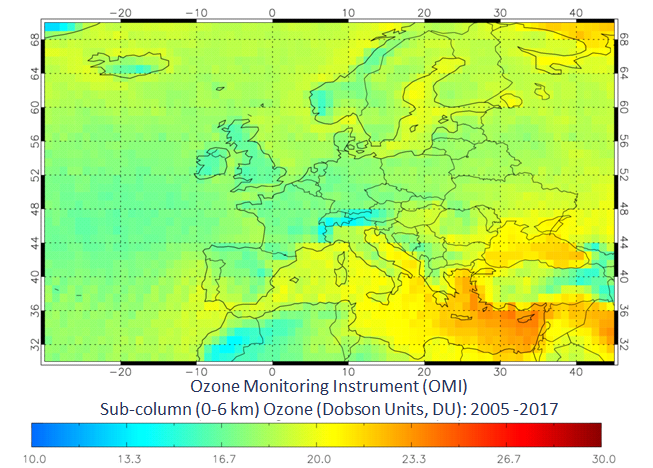Research project
Tropospheric Ozone and Climate Interactions in the Satellite Era (TOCISE)
- Start date: 1 March 2021
- End date: 28 February 2023
- Funder: European Space Agency
- Value: €99,000
- Partners and collaborators: UK Met Office, Rutherford Appleton Laboratory
- Primary investigator: Dr Richard Pope

Tropospheric ozone is a hazardous air pollutant which is seriously detrimental to human health (e.g. linked to cardiovascular and respiratory diseases) and the biosphere (e.g. reduction in agricultural crop yields). In the upper troposphere ozone is also an important short lived climate forcer and, therefore, an essential climate variable.
Accurate estimates of trends in tropospheric ozone are needed to understand present and future climate change. However, even though many satellite tropospheric ozone records now exist (i.e. since 2000), there are large regional scale inconsistencies in their representation of temporal variability and change, as recently shown by the Tropospheric Ozone Assessment Report (TOAR).
This fellowship will use ESA-Climate Change Initiative data, new innovative satellite products and a state-of-the-art Earth system model to understand and resolve the current discrepancies and uncertainties between tropospheric records, and to determine the implications for climate (e.g. radiative forcing) in the satellite-era. A key aspect of this work is assessing how the vertical sensitivity/sampling differences and uncertainties in the available satellite products influence long-term trends.
This vertical sensitivity, which is quantified through the satellite averaging kernel (AK), quantifies which part of the troposphere the ozone signal is weighted towards, and is potentially contributing towards the apparent regional tropospheric trend discrepancies. Modelling tools will be used to interrogate the different satellite product AKs and investigate the extent to which satellite vertical sensitivity can explain observed trends.
The UK Met Office’s Earth system model (UKESM) will be used to examine the extent to which satellite vertical sampling is driving inconsistencies in observed trends and isolate regions where we have high confidence in the underlying ozone tendency. UKESM will then be used to quantify the radiative response of changes in tropospheric ozone since 2000 and determine the key processes (e.g. emissions or land surface interactions) controlling the observed temporal change and variability.
Overall, this project aims to achieve a much better understanding of the satellite-derived tropospheric ozone trends, provide improved estimates of tropospheric ozone impacts on climate (i.e. radiative effect) and determine the processes driving tropospheric ozone change.

